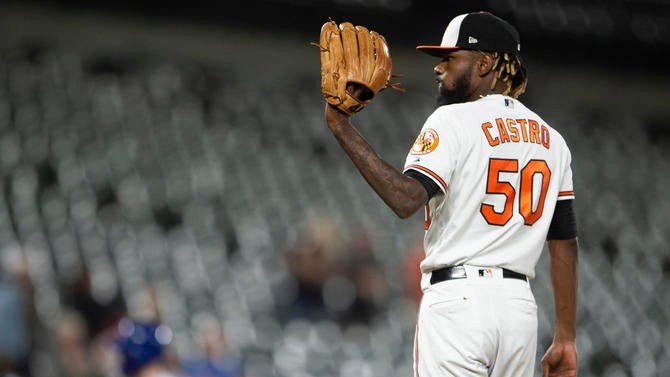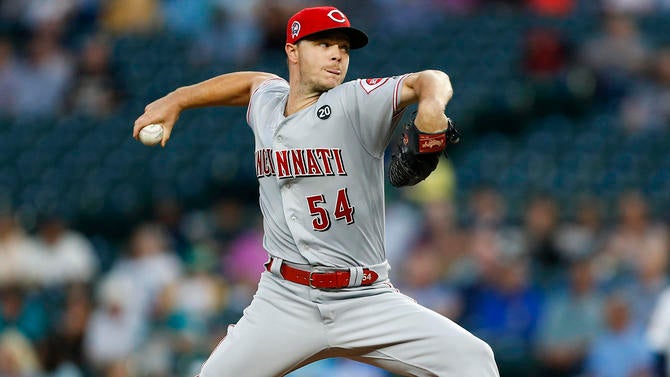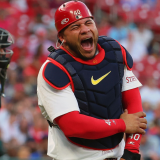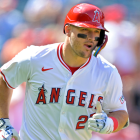With Opening Day 2020 just three weeks away, we've reached the part of the spring when prognostication becomes the baseball media's second religion. There is no shortage of questions to answer with guesses at this point. Who will be the fifth starter? What about the last player on the bench? What are the odds this or that injury is healed in time for the season?
At minimum, these exercises are a good way to run down the clock. Sometimes, though, they prove to be more than filler, and can spur some interesting thoughts. For instance, this week we intend to answer two questions to the best of our ability: 1) what sub-.500 teams will ascend and become contenders?; and 2) which playoff teams from last season will miss this year's dance? Today, we'll focus on the first question.
Since Major League Baseball introduced the 10-team playoff bracket in 2012, every postseason has included at least one team who had a losing record the season prior. On average, about 2.5 teams per season make the leap from sub.-500 to partaking in the ensuing October. In the past eight tournaments, two have seen as many as four clubs go from pretenders to contenders.
How many will do it this year? Let's break down last season's 14 losing teams into tiers.

The race for No. 1
Detroit Tigers (47-114)
Baltimore Orioles (54-108)
Miami Marlins (57-105)
Kansas City Royals (59-103)
These were the four worst teams last season. PECOTA projects the best of the four this year -- the Marlins, who added Jonathan Villar and other veterans to their roster -- to win 70 games. In other words, the only race they'll be involved in is for the No. 1 pick in the 2021 draft.
Heading the wrong way
San Francisco Giants (77-85)
Colorado Rockies (71-91)
Pittsburgh Pirates (69-93)
The Rockies were an absolute mess last season. There's a fair chance they rebound to some extent, but the risk is that their relationship with Nolan Arenado continues to deteriorate to the point where an in-season trade becomes a necessity. In that case, it's hard to see the Rockies making it to October, especially when the odds are already very much against them doing so.
The Pirates were also an absolute mess last season. They changed brain trusts over the winter, and it would be a surprise if they don't overhaul the roster sooner than later.
The Giants, who overperformed to win 77 games last season, wouldn't seem to belong here. The talent level is lower than it was at the end of 2019, however, as Madison Bumgarner and Will Smith have each since departed through free agency. It doesn't help that nine of San Francisco's 13 projected position players are either older than 30 or will turn 30 in-season.
Check back in two years
Seattle Mariners (68-94)
The Mariners figure to be quite bad this season. They do have a good farm system in place, and they ought to to take a more aggressive approach in the next year-plus as it pertains to acquiring big-league talent. Barring something radical occuring, we don't expect they'll be in position to compete, even for a wild card spot, until the 2022 season at the earliest. In the interim, Mariners fans should invest in the MiLB TV package so they can watch Jarred Kelenic, Julio Rodriguez, and the franchise's other building blocks of tomorrow.
Check back in a year
Toronto Blue Jays (67-95)
To the Blue Jays' credit, they spent the winter addressing their pitching staff. Hyun-Jin Ryu could be a big boost if he can stay healthy, and Chase Anderson and Tanner Roark are both respectable enough additions. (Travis Shaw is a worthwhile rebound candidate on the offensive end, too.) Our guess is that the Blue Jays are still about a year away from making a real run at the postseason, but we'll concede it's at least possible they flirt with .500 this year.

The actual candidates
5. Texas Rangers (78-84)
The Rangers had two-fifths of a good rotation last season, in Lance Lynn and Mike Minor. They added Corey Kluber, Kyle Gibson, and Jordan Lyles to the mix over the winter, and that could help turn a weakness into a strength. Alas, their defense is still going to be a sieve, and their lineup has more question marks than exclamation points. If the Rangers finish third in their division, they'll be doing well. As such, we can't rank them higher than fifth.
4. San Diego Padres (70-92)
The Padres are becoming a fixture in these kinds of pieces. You can see the makings of a decent team if you look at their roster for long enough. Adding Tommy Pham and Trent Grisham could give the Padres a more well-rounded lineup; the rotation could be solid if Garrett Richards and Dinelson Lamet stay healthy; and the bullpen has the chance to really impress. One negative is that their only path to the postseason seems to be through the Wild Card Game.
T2. Chicago White Sox (72-89), Los Angeles Angels (72-90)
We're going to call this a tie for the second spot because the Angels and White Sox share a lot of similarities. Both improved this winter, in part by signing a top free-agent hitter; both have lingering rotation questions; both have top prospects to promote in-season; and both are expected to finish second in their division. If we had to pick, we'd go with the Angels because it's hard to beat a core that includes Mike Trout, Shohei Ohtani, and Anthony Rendon. The White Sox, though, certainly have a chance to make their first postseason trip since 2008.
1. Cincinnati Reds (75-87)
Would you believe that PECOTA has the Reds winning the National League Central? Even if you disagree with the algorithm in that respect, the Reds appear to have the potential to trot out an above-average rotation and lineup with some depth to spare. Credit that possibility to an aggressive year-plus push that has seen Cincinnati acquire Sonny Gray, Trevor Bauer, Wade Miley, Nick Castellanos, Shogo Akiyama, and Mike Moustakas. Depending on what happens with Nick Senzel, the Reds could even have the means to make a blockbuster trade in-season. Add in how the Reds had a better run differential than their record indicated in 2019, and there's sufficient reason to like their chances of making the leap from non-contention to October.






















